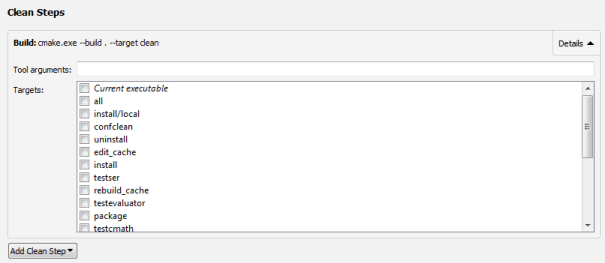

- #ADD ARGUMENTS TO CMAKE INSTALL HOW TO#
- #ADD ARGUMENTS TO CMAKE INSTALL SOFTWARE#
- #ADD ARGUMENTS TO CMAKE INSTALL CODE#
Therefore, the exact compiler flags would need to be hardcoded somewhere when creating a library file.
#ADD ARGUMENTS TO CMAKE INSTALL HOW TO#
These scripts told computers how to compile projects, which executables to generate, and which libraries to create. CMake’s add_library Helps With Portabilityīefore CMake, there was a time when people wrote massive scripts for building C/C++ projects – Makefiles.
#ADD ARGUMENTS TO CMAKE INSTALL CODE#
Do you have certain bits of code that need to be shared with different programs/executables? Do you want to distribute some code publicly so other people can use it in their projects? Is your codebase getting ridiculously big, and you need to split parts of it into reasonable modules? Then you need to start thinking about libraries. In summary, you may need to create libraries for a few reasons.


Unsurprisingly, libraries aren’t unique to C/C++!
#ADD ARGUMENTS TO CMAKE INSTALL SOFTWARE#
Interestingly, if you develop software of any kind, you are probably using various different libraries. The Problem – Why Do We Need To Create Libraries?Īccording to Wikipedia, a library is “a collection of resources by computer programs” in software development, and they include “documentation, subroutines, classes, and values” that aid developers in implementing logic for their software. In this post, we will learn how to create libraries with CMake, the types of libraries you can create and how to link them to other targets. Perhaps you can name this library “engine”, which will be linked against your game executable for drawing in 2D. Learn how to create different library types with CMake, and how to include them in your executables!įor example, if you are developing a 2D game such as Conway’s Game Of Life, you may want to split all the structures and functions related to graphics into an independent library. This can all be achieved with CMake’s add_library(.) function. Libraries are very useful when a C++ project becomes large enough, we may want to split the code into multiple library and executable CMake targets in order to make our project more modular and understandable.


 0 kommentar(er)
0 kommentar(er)
